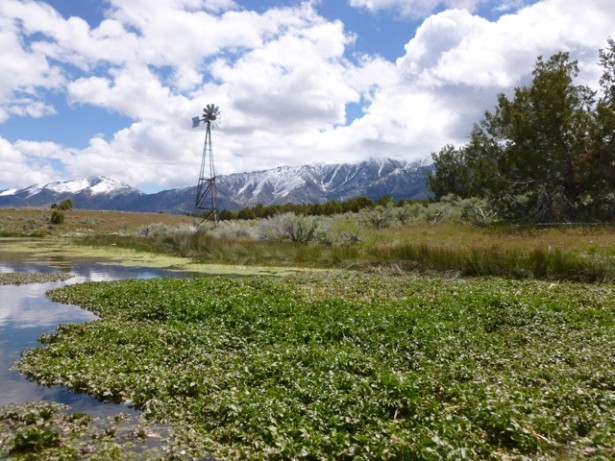
The clock is ticking on the 60-day review period for the environmental assessment report on a controversial water pipeline along the Nevada-Utah border that the Goshute Confederated Tribes say would draw down their own water supplies and impede economic development as well as compromise sacred sites.
The eight-foot-diameter pipeline would carry water 300 miles from eastern Nevada to Las Vegas, pumping about 84,000 acre-feet of water annually from Goshute and other tribal lands.
The Bureau of Land Management (BLM) released a 5,000-page environmental-assessment report on August 3 that recommended the pipeline, a project of the Southern Nevada Water Authority (SNWA), be built. The 60-day so-called availability period for the $15.5 billion project began after a comment period during which the Confederated Tribes of the Goshute Indian Reservation (CTGR) argued vociferously against the plan.
“They’re going to let Las Vegas steal our water, build a pipeline that’s over 300 miles long and eight feet wide, and decimate our people,” CTGR Chairman Ed Naranjo said in a statement quoted by the Associated Press. “We will not go away and will take all actions necessary to stop this attempt to take our water. Water is life to us, [and] if the federal government takes it away, we will cease to be a people.”
An acre-foot, a unit of measure used in water-resource management, is the volume that would be contained in an area measuring one foot by 66 feet by 660 feet, the annual equivalent of average suburban usage. According to The Salt Lake Tribune, the environmental impact statement lays out a plan for “263 miles of water pipeline, 230 miles of overhead power lines, six electrical substations, two pumping stations, a 40-million-gallon storage reservoir and a 165-million-gallon water-treatment facility.”
Although the environmental impact statement does not appear to okay pumping groundwater from Snake Valley, which lies directly underneath Goshute lands, opponents worry that draining water from the four valleys that do have approval—Spring, Cave, Dry Lake and Delmar—would also reduce levels in the Snake Valley aquifer. In addition, that valley is not ruled out for future applications, The Salt Lake Tribune reported.
“The BLM is shoving this massive and reckless project down the throats of Indian tribes despite the fact that the federal government has a trust responsibility to preserve and protect all Indian tribal trust assets, which definitely includes water,” said CTGR Vice Chair Madeline Greymountain to the AP.
On another front, the Goshute are working to secure water rights so as to attract development on their lands. To this end they signed a memorandum of understanding with Utah Governor Gary Herbert at the state’s seventh annual Native American Summit, held from August 14 and 15 in Salt Lake City. The tribes are looking not only to preserve their water but also to create an economic development base for the 500 members who live on the reservation, about 110,000 acres of which lie on the Utah side of the border, according to The Salt Lake Tribune. The BLM’s final decision is due in October.
From an environmental standpoint, the Goshute say that SNWA’s claims that pumping that much water out from under eastern Nevada’s desert valleys won’t harm people or wildlife are unsound.
“Independent hydrologists contend that mining and exporting so much water will cause major environmental degradation and destroy the livelihoods of rural residents and tribal communities in eastern Nevada and western Utah,” the Goshute Tribe contends on its website. “The area affected by the massive pumping proposal is home to National Wildlife Refuges in Nevada and Utah, state wildlife management areas, Great Basin National Park, Native American communities and dozens of agricultural communities who have been living within the constraints of the regions’ limited water supplies for over a century.”
© 1998 - 2012 Indian Country Today. All Rights Reserved To subscribe or visit go to: http://www.indiancountry.com